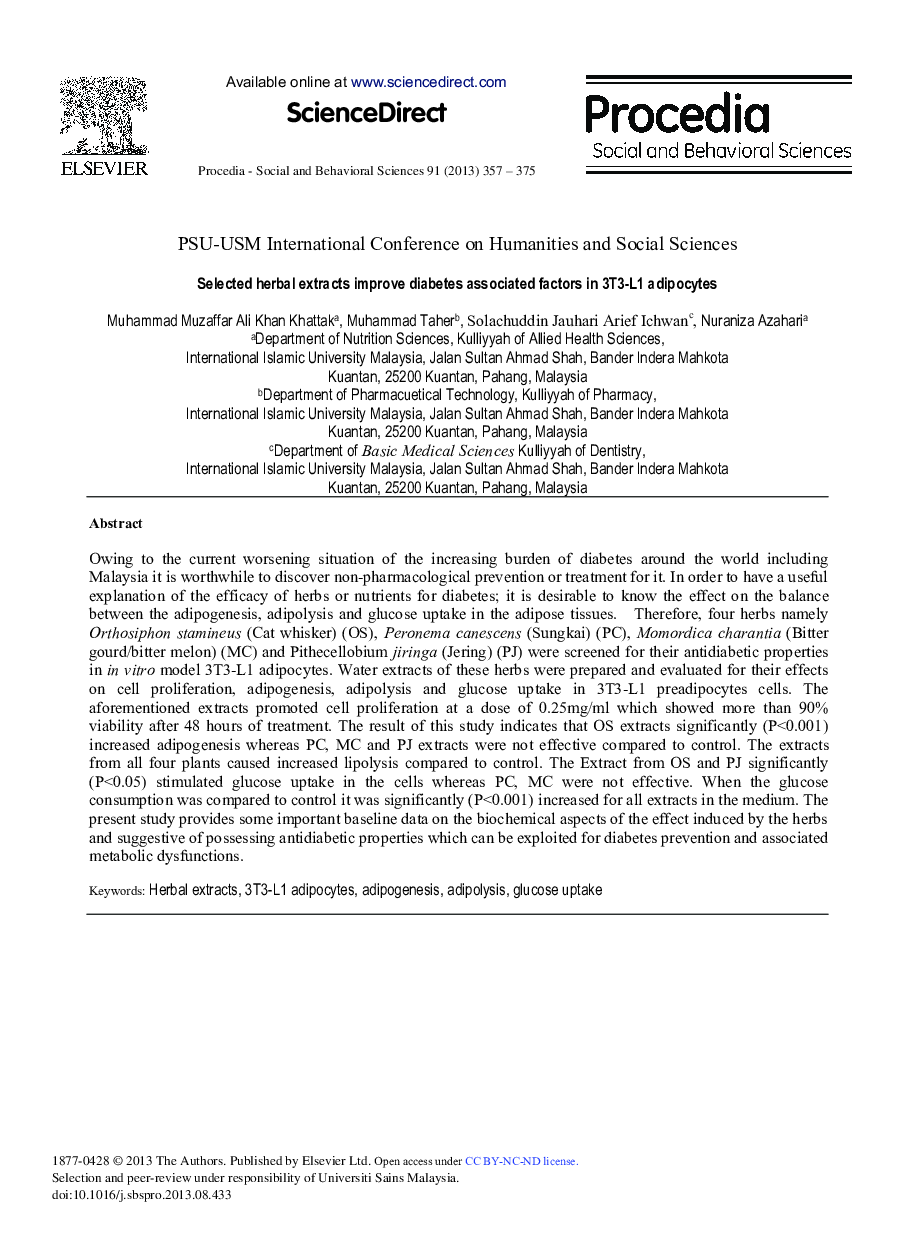| Article ID | Journal | Published Year | Pages | File Type |
|---|---|---|---|---|
| 1118335 | Procedia - Social and Behavioral Sciences | 2013 | 19 Pages |
Owing to the current worsening situation of the increasing burden of diabetes around the world including Malaysia it is worthwhile to discover non-pharmacological prevention or treatment for it. In order to have a useful explanation of the efficacy of herbs or nutrients for diabetes; it is desirable to know the effect on the balance between the adipogenesis, adipolysis and glucose uptake in the adipose tissues. Therefore, four herbs namely Orthosiphon stamineus (Cat whisker) (OS), Peronema canescens (Sungkai) (PC), Momordica charantia (Bitter gourd/bitter melon) (MC) and Pithecellobium jiringa (Jering) (PJ) were screened for their antidiabetic properties in in vitro model 3T3-L1 adipocytes. Water extracts of these herbs were prepared and evaluated for their effects on cell proliferation, adipogenesis, adipolysis and glucose uptake in 3T3-L1 preadipocytes cells. The aforementioned extracts promoted cell proliferation at a dose of 0.25 mg/ml which showed more than 90% viability after 48 hours of treatment. The result of this study indicates that OS extracts significantly (P<0.001) increased adipogenesis whereas PC, MC and PJ extracts were not effective compared to control. The extracts from all four plants caused increased lipolysis compared to control. The Extract from OS and PJ significantly (P<0.05) stimulated glucose uptake in the cells whereas PC, MC were not effective. When the glucose consumption was compared to control it was significantly (P<0.001) increased for all extracts in the medium. The present study provides some important baseline data on the biochemical aspects of the effect induced by the herbs and suggestive of possessing antidiabetic properties which can be exploited for diabetes prevention and associated metabolic dysfunctions.
